In the months following the death of his young bride, Ralph Waldo Emerson made daily sojourns to her tomb. Ellen’s death had left Emerson bereft, unsure of his faith, and questioning the idea of personal immortality. And so it was, in a state of deep spiritual crisis and craving a direct and unmediated experience of death, that on a cold March day in 1832 Emerson journeyed to the tomb and opened the coffin of his beloved. The experience changed him. Though afterwards he continued to walk to Ellen’s grave every day, his absorption with death dissolved and he determinately turned his gaze and thoughts to life. Shortly after his graveyard experience Emerson penned a sermon titled “The God of the Living” and an entry in his journal around that time reads, “Let us express our astonishment before we are swallowed up in the yeast of the abyss.”[1]
Religion may be seen as our human response to the dual mystery of being alive and having to die.[ii] Unitarian Universalists place a strong emphasis on the here and now, but what do they have to say about dying? Have their notions about death changed over time? How are these ideas reflected in UU theology? As death is an oft ignored subject in UU circles, I cast a wide net in searching for answers to these questions. Clues can be found in the writings of historical and contemporary theologians, UU religious education curriculums, commemoration services, and funereal songs and readings.
For a complete review of this excellent journey through the ecumenical evolution of the UU view of death, the UU contribution to the modern garden graveyard and an interesting contemplation on death, life and some of the practices surrounding both, please see Kristine's full paper posted in the comments below (apologies for the formatting, but I couldn't attach/post properly at this time.)
As an absolute agnostic, I'm quite fascinated by the Universalist Unitarian's lack of a single perspective, or said another way, their openness and integration of the diverse viewpoints of many. I was even more intrigued to find out that many UU congregations even have atheists among them.
I've long contended that an agnostic is nothing but a polite atheist, aware of both the upsetting nature of his/her beliefs on others when expressed as well as the personal liability of being a non-believer in a world of religiosity. It is encouraging to see a congregation that seems to be more focused on living together as humans than the elevation of a world view, godhead or political institution. Thanks Kat for sharing your academic paper!
Happy holidays to all and here's wishing for a 2010 with more joy, prosperity and tolerance for all.





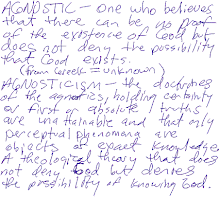





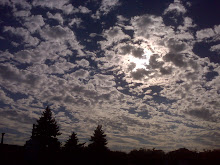
















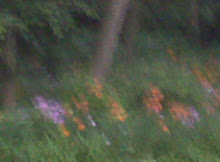

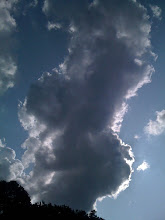




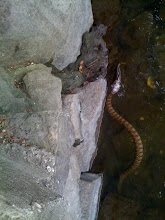
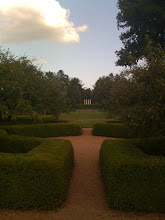
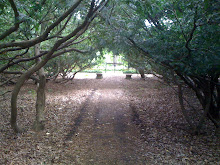





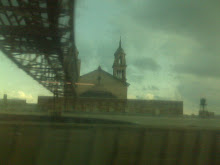


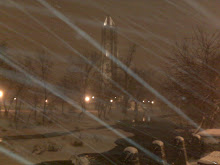









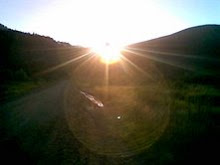
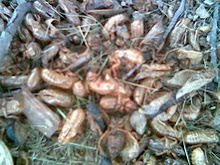





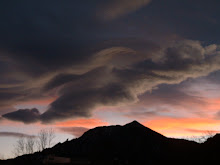







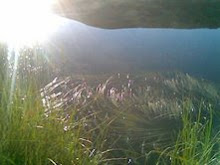


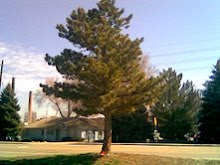

11 comments:
Early Universalists and Unitarians drew heavily on the language and ideas of their Christian heritage in understanding death and in fashioning concepts of the hereafter. Chronicling her young son’s death in 1852, Eunice Hale Cobb, wife of a Universalist minister, writes of “heaven as the final inheritance” and of “the bright glories of the upper world.” She addresses God directly,
I will love thee more than ever, because thou didst bless the life, to its last mortal moment, of my darling boy, and didst sweetly bear him on, that he should ‘never die!’ Gently he passed away, convoyed by those beautiful angels, who had already borne to him the glad message of life immortal, and shown to him the cloudless glories of that celestial paradise above.
William Ellery Channing (1780-1842), one of the 19th century’s most prominent Unitarian preachers, too, describes death and eternal life in such language: “Death will be a birth into a new life. Sprung from an eternal parent, surely as God lives we are to live forever (. . .) Believing in the All-Good, I feel that the perfection of my own spirit is no dream (. . .) that this spirit may actually be pure, powerful, bright, and blessed as an angel’s.”
In many ways, Universalism developed in direct response to Calvinist ideas of what happens in “afterlife,” specifically their belief that some would be saved and some were preordained for eternal damnation. Elizabeth Cady Stanton, writing in the 19th century, declared it “one of the greatest crimes to shadow the minds of the young with (. . .) fears of the unknown and the unknowable.” Instead, Universalists embraced a position of universal salvation, one in which all souls would find final harmony with God. Hosea Ballou (1771-1852), a leading proponent of Christian Universalism, saw dying as a natural condition of human life but also declared God’s love to be stronger than death. He believed that God could be trusted
to embrace all of humanity and that even in death, humans are in “the extended arms of heavenly love and divine benevolence.” God was viewed as infinitely merciful, his love so great that souls ushered into the afterlife were immediately cleansed.
James Freeman Clark (1810-1888), too, addresses the afterlife in his 1884 Manual of Unitarian Belief. He writes:
Unitarians believe that the future life will be a continuation of the present life, with opportunity for further growth and development. … outward death, what we call death, is nothing; it is merely the soul laying down its present instruments in order to take up others. We often hear it said that this life is a state of probation; but we believe it to resemble rather a school, where we are to be educated for a better and higher life hereafter.
According to Clark, this future life would not be made up of two distinct worlds, one for the good and one for the wicked, rather there were “many hells and many heavens, according to the character and condition of each person.” He saw the purpose of future suffering as reformatory; punishment would not be everlasting, but would “continue until the sinner shall be reformed.” Thus, the purpose of earthly life was to learn to trust and love God and develop habits of goodness. “When we believe that God cares for us, that he loves us, we are free from the fear of death. We trust ourselves entirely to our faithful Creator, and say, ‘Into thy hands, O Lord, l commit my spirit,’ sure that when with him we are always safe.”
Theodore Parker (1810-1860), another celebrated Unitarian of the mid-nineteenth century, is perhaps best known for his biblical criticism and his commitment to social reform. In the final year of his life, after suffering a physical collapse brought on by tuberculosis, Parker penned an autobiographical account of his preaching career entitled “Experience as a Minister.” In this treatise he names as one of the great primal intuitions of human nature the “instinctual
intuition of the immortal, a consciousness that the essential element of man, the principle of individuality, never dies.” Ruminating on his own impending death he exclaims, “so wondrous is this human life, not ruled by fate, but Providence, which is Wisdom married unto Love, each infinite!” He goes on to directly address his congregants, “To undo the natural ties more intimately knit of long-continued friendship and of love – this is the bitter part. But if it be my lot, let not you nor me complain. Death comes to none except to bring a blessing; it is no misfortune to lay aside these well-loved weeds of the earth, and be immortal.”
Boston’s Mount Auburn Cemetery also reveals clues about early Unitarians’ views on death. Most New England cemeteries of the time were bleak and forbidding places, home to vandals and vagrants. Absent were trees and grass, and graves were often left open awaiting additional coffins. These were places the living shuttered to even walk past, and certainly few people would spend time graveside paying respect to their dead. In 1831, however, liberal Bostonians sought a new kind of final resting place. Leading the way were two Unitarians, physician Jacob Bigelow and U.S. Supreme Court Justice Joseph Story. They and others founded Mount Auburn, the nation’s first “garden” cemetery and, indeed, the first to use the word cemetery (from the Greek word koimeterion meaning “place of sleep”). As opposed to the Calvinist notion of a terrible final reckoning, these early Unitarians saw death as a natural part of life, a transition to be welcomed as a return to nature or, as Unitarian poet William Cullen Bryant wrote in his renown poem Thanatopsis, “to mix forever with the elements.” The cemetery’s design, with its picturesque landscape featuring paths and ponds and trees, reflects this more positive view of death and provides a welcoming space for the living to both honor departed loved ones and spend time in reflection. It is here that many Unitarian and
Universalist luminaries are buried and memorialized including John Murray, Ballou, Channing, Margaret Fuller and Henry Wadsworth Longfellow.
By the close of the nineteenth century, Darwinism, historical and religious criticism, and an emerging post-Christian outlook had altered the religious landscape. Veneration for scientific discovery, a key feature of the new century, had a significant influence on liberal theology. For a group that had always placed great value on reason, “truth” was increasingly sought in the “objective” realm of science. In matters of death and immortality, however, no evidence can be verified. In the absence of indisputable data, a variety of positions emerged as well as a questioning of the very existence or importance of an afterlife.
With a revolution in physics, Western science was fixated on the concept that everything in the universe is subject to physical laws, matter being transformed by energy into a variety of conditions and shapes that come into existence only to eventually pass away in time and space. Death, therefore, could be seen as the end of existence for all who succumb to its ultimate withdrawal of the life force. For Alfred North Whitehead (1861-1947), a British philosopher whose ideas gave rise to process theology, this strictly materialistic approach to life completely ignored the subjective life of humans, that area of existence commonly called “spiritual.” Though he was somewhat ambiguous about an afterlife, Whitehead put forward the concept of “objective immortality.” According to this doctrine, what one is during life determines what one is eternally. As explained by scholar Robert Mellert:
In this interpretation, the series of actual occasions that constitutes the continuity of the self throughout one’s personal history culminates in one final occasion in which that history is synthesized. The entire continuity, but especially this final synthetic occasion in the continuity, is experienced by God and becomes a part of the data of God’s own actuality. In this way each person is immortalized everlastingly in God, retaining permanently his own uniqueness and individuality, and contributing that uniqueness as data to a fuller appreciation of value and novelty for the future.
Death is, thus, not a passing into nothingness but an immanent and everlasting incorporation into God. All that we say and do in our lifetime serves to feed the world in its infinite process of becoming. As contemporary theologian Gary Kowalski says, “it is comforting to believe that our little lifetimes add to the larger composition in some small way” and “what finally matters (. . .) is the life of the Whole, the Something that includes me, outlasts me.”
Charlotte Perkins Gilman (1860-1935), a contemporary of Whitehead, took a very different approach in her ideas about death. While she considered an afterlife and the post-death survival of the individual soul as givens, she declared that “the most widely entertained religious misconceptions rest on a morbid preoccupation with death and ‘another world.’” According to Gilman, this disproportionate interest in death leads to indifference to human improvement now by focusing highest efforts towards assuring forthcoming happiness in the hereafter. She argued for a faith inspired by birth and the needs of earthly life: “To the death-based religion the main question is, ‘What is going to happen to me after I am dead?’ – a posthumous egotism. To the birth-based religion the main question is, ‘What must be done for the child who is born?’ – an immediate altruism.” This was not a completely new idea. Judith Sargent Murray (1751-1820), a leading voice of Universalism in the eighteenth century, urged a redirection of attention from the afterlife toward making present life reflective of God’s love for everyone. This notion finds new voice with current Starr King University President Rebecca Parker: “The Kingdom of God is not something we get to by dying and going to heaven. It is something that can come into existence on earth. Our work and our lives make a contribution towards bringing in the kingdom. Or the beloved community, or establishing justice, compassion and equity in this world.” According to Parker’s version of realized eschatology, heaven and all that is hoped for in the future is wholly available here and now.
Humanism, which has as its goal the realization of human potentiality of the individual and society, also strongly emphasizes the present moment. 1933’s “Humanist Manifesto I” states that “religious humanism considers the complete realization of human personality to be the end of man’s life and seeks its development and fulfillment in the here and now.” The 1973 revised version, reaffirms humanists belief that traditional theism is “unproved and outmoded” and that ideas of salvation offer false hopes of a hereafter. The authors and signers of “Humanist Manifesto II” assert:
Promises of immortal salvation or fear of eternal damnation are both illusory and harmful. They distract humans from present concerns, from self actualization, and from rectifying social injustices. Modern science discredits such historic concepts as ‘the ghost in the machine’ and the ‘separable soul.’ Rather, science affirms that the human species is an emergence from natural evolutionary forces. As far as we know, the total personality is a function of the biological organism transacting in a social and cultural context. There is no credible evidence that life survives the death of the body. We continue to exist in our progeny and in the way that our lives have influenced others in our culture.
A 2003 edition of the manifesto, “Humanism and Its Aspirations,” is much shorter than its predecessors and, while still emphasizing current life, its approach to death has a significantly different feel. It claims as an aim of humanity: “finding wonder and awe in the joys and beauties of human existence, its challenges and tragedies, and even in the inevitability and finality of death.”
The triumph of humanism and a growing rejection of Christianity saw twentieth century Unitarians and Universalists looking more and more toward the plethora of world religions as sources for inspiration. Christianity became just one tradition among many where congregants could look for “answers” and seek greater spiritual depth. This acceptance and incorporation of non-Christian ideas and traditions opened the door for new ways of thinking about death and encouraged individual congregants to develop their own notions about dying and afterlife.
This opening up to new perspectives is well reflected in the church’s religious education curriculum. In 1937 the American Unitarian Association hired Sophia Lyon Fahs, an emerging and innovative leader in the field of religious education, to write and edit a series of books for the Unitarian curricula. It was Fahs’ dream that children become aware that people of all times and places had the same wonderings and so published several books that dealt with these issues including From Long Ago and Many Lands and Beginnings of Life and Death. Her multi-cultural approach is still evident in modern-day Unitarian Universalist youth education programs where, for example, Etan Boritzer’s What is Death? is often used. In this book written for children, the author explores death from a variety of perspectives including Buddhism, Judaism, Christianity, Hinduism, Islam, and Atheism. It concludes with the idea that “maybe Death is only a place where a person, and his or her Soul, live on forever in other people’s hearts.”
Having been exposed to multiple traditions throughout their time in UU religious education, students in their Coming of Age year are expected to develop and write their own personal credos. Judith Burch’s Words to Live By and similar manuals are sometimes used to help guide students in this process. In Burch’s booklet, she encourages the youth to reflect on death and loss and what they have to teach about life. She includes a Buddhist meditation exercise; students are asked to breathe deeply and embrace life and death. The guided meditation includes the words, “Death alone is certain. The time of death uncertain. Being fully aware that life is precious, is there something you could be doing at this moment to make more meaningful use of the time you have been given?” As specifics of afterlife are unknown, what becomes important is the conduct and choices of one’s life.
To drive home the point of twentieth century UUs’ changed approach to death, consider the very Christian religious education outlook of nineteenth century Universalist minister SyIvanus Cobb: “When [children] witness the sickness and death of friends, and know that they too must die, they painfully need (. . .) the balmy comforts and consolations of the gospel (. . .) which teaches them to trust God as the Father and Friend of all, and to hope in Christ for the end of death and all unhappiness.” In contrast, today’s UU religious educators are more likely to utilize children’s literature than Bible verse when instructing on death. In Leo Buscaglia’s classic The Fall of Freddie the Leaf, a changing Freddie implores another leaf:
‘Where will we go when we die?’
‘No one knows for sure. That’s the great mystery!’
‘Will we return in Spring?’
‘We may not, but Life will.’
‘Then what has been the reason for all this?’ Freddie continued to question. ‘Why were we here at all if we only have to fall and die?’
Daniel answered in his matter-of-fact way, ‘It’s been about the sun and the moon. It’s been about happy times together. It’s been about the shade and the old people and the children. It’s been about colors in Fall. It’s been about seasons. Isn’t that enough?’
Prevailing themes of the present curriculum are 1) death is natural, 2) what comes next is unknown, and 3) life is to be celebrated.
This evolution of thought can also be traced in commemoration services and funereal songs and readings. A hymn from an 1845 psalms and songs collection contains the following verse: “Look aloft! The spirit’s risen - / Death cannot the soul imprison; / ‘Tis in heaven that spirits dwell, / Glorious, though invisible.” And at little Jimmy Cobb’s funeral in 1852 his eldest sister Haley offered these words, “Now, freed from every pain, / New life to him is given; / He dwells with Jesus, whom he loved, - / A blessed heir of heaven.” These traditional notions of the hereafter are still much in evidence in the American Unitarian Association’s 1914 hymnbook; its suggested service of commemoration mentions “everlasting life” and “thy heavenly kingdom” as the final resting place for immortal souls.
The Universalists’ 1937 Hymns of the Spirit acknowledges drawing material from a variety of ancient and modern sources, but what is most interesting for our purpose, is that in at least one hymn, rather than proffering typical visions of heaven, the lyrics proclaim that “I know not what beyond may lie” – a clear indication of changing beliefs and certitude. It isn’t really until 1964’s Hymns for the Celebration of Life, however, that the shift away from Christianity, an embracing of other traditions, and a more humanist perspective become most apparent. That said, of the seven hymns suggested for memorial and funeral services, six of them are taken from the Bible! But a shift in attitude definitely can be seen as most of the hymns that do address death make no real mention of salvation or an afterlife; instead, they focus on the everlasting nature of God and Love, the passage of time, and how memories of a well lived life outlast us. As the book’s title conveys, the hymns overwhelming celebrate life. Indeed, death’s rare appearance is indicative of Unitarian Universalisms’ increasing focus on humanity and the here and now. This is perhaps best represented by a passage written by Richard Jeffries entitled “Immortality” found in 1993’s Singing the Living Tradition:
It is eternity now.
I am in the midst of it.
It is about me, in the sunshine;
I am in it, as the butterfly in the light-laden air.
Nothing has to come,
It is now.
Now is eternity,
Now is the immortal life.
Inescapable death serves as incentive to focus on the present and make the most of earthly existence.
In the preface to Singing the Living Tradition, the Hymnbook Resources Commission comments that “our living tradition began the twentieth century primarily as a liberal Christianity among Universalists and Unitarians, and ends that same century also embracing humanism, feminism, mysticism, natural theism, the Jewish tradition, [and] many other world faith traditions.” As mentioned before, this diversity, along with Unitarian Universalism’s promotion of personal search for truth and meaning, paved the way for individuals to develop their own beliefs about dying. Some contemporary practitioners believe in heaven. Some believe heaven and hell are states of consciousness. Some believe in reincarnation. Some believe that afterlife is nonexistent or not known or not important as actions in life are all that matter.
With such multiplicity of belief, funerals themselves have changed significantly in form and content. In his guide to modern memorial services, Unitarian Universalist minister Edward Searl counsels, “There is no right or wrong way to handle a funeral. There is your way – the way that respects your values and emotions.” Both he and Sarah York, another UU minister writing about death rituals, offer numerous suggestions for incorporating various traditions. Indeed, Searl’s book provides many samples of memorial services including ones that are nature-based, that ask the blessing of a personal God, that make use of candles and meditation, and that reflect the traditions of Quakers, Native Americans, Women’s Circles, Judaism and Christianity. Great Occasions, edited by UU Carl Seaburg, is another invaluable resource for funeral planning as it provides a multitude of writings from diverse sources that can be used to mark the important junctures of human life. One selection frequently read at memorial services well captures Unitarian Universalism’s growing diversity: “At such a time [as grief] the various faiths which sustain us separately come together in a harmony which acts across all creeds and assures us of the permanence of goodness, the inspiration of dedication, the value of serviceable human life” (William B. Rice).
An accounting of modern-day UU death practices would be incomplete without at least briefly mentioning some other ways that Unitarian Universalists bring their Principles into play when dealing with practical matters of dying. For example, a generally environmentally-conscious group, many UUs choose cremation over burial as a better ecological choice. Also, as Unitarian Universalists place more emphasis on this world than the next, organ donation and donating one’s body for medical research are widely supported posthumous options. By becoming an organ or tissue donor, individuals have the opportunity to improve the life of another beyond the span of their own lifetime. A popular slogan is, “Don’t take your organs to heaven. Heaven knows we need them here!” Whatever UUs’ beliefs about life after death, the faith calls people to improve this life by working to improve the health and dignity of all people. Finally, Unitarian Universalists have been at the forefront of the Right to Die movement guided by a belief that the inherent dignity of life may be compromised when extended beyond one’s will or ability to maintain that dignity. Charlotte Perkins Gilman, an early advocate of euthanasia, chose to end her own life with an overdose of chloroform back in 1935. The UU Association’s formal position advocates “the right to self-determination in dying, and the release from civil or criminal penalties of those who, under proper safeguards, act to honor the right of terminally ill patients to select the time of their own deaths.” All of these actions indicate Unitarian Universalists’ focus on the here and now and a sense of social responsibility with little concern for fear of hell or hope for heaven.
As this essay began with an examination of the predominant beliefs of early Unitarians and Universalists, it seems only right to conclude with a survey of what contemporary theologians have to say on the subject of death. Robert Fulghum, William Murry, and Forrest Church, Unitarian Universalist ministers all, have each made important recent contributions to the discourse.
In his book From Beginning to End, Robert Fulghum includes a compelling picture of himself sitting in a chair in a Seattle cemetery atop the plot where he will eventually be buried. “More than a grave, the site has become a workshop and laboratory. I go there when the muddy springs of my mind need clearing. A ritual of reckoning.” In his years ministering to congregants facing terminal illness, the author developed an appreciation for the importance of recognizing one’s finitude; in doing so, it becomes easier to see the whole of one’s existence and make meaningful decisions about how to spend this precious time on earth. He notes that it is often those who have made arrangements for their death that have also reevaluated their priorities and made renewed commitment to life. In pondering dying, Fulghum writes:
I have never liked the phrase that says we’re made of dust and return to dust. We are energy, which is interchangeable with light. We are fire and water and earth. We are air and atoms and quarks. Moreover, we are dreams, hopes, and fears held together by wisdom and driven apart by folly. So much more than dust. The biblical verse should say, ‘Miracle thou art and to Mystery returneth.’
William Murry also takes on death in his book A Faith for All Seasons. He refers to surveys that show that, while there is no consensus on the question of life after death, most religious liberals do not believe in immortality. In a culture where belief in an afterlife can no longer be taken for granted, Murry proposes that liberal religion offers other responses to the reality of death. First is acknowledgment that death is a mystery. It is impossible to know with any certainty what, if anything, comes next, and so in the liberal tradition of truth-seeking, it is important to be open to new discoveries and possibilities. Second, death is natural. Death might be seen as “nature’s way of making room for others, to give others a few years of life on this beautiful earth.” This idea, too, provides a sense of the place of individual existence in the greater framework of the Living Whole. Murry explains:
I find it helpful to think of ourselves, not as totally discreet and separate beings, but as part of a Great Living System. (. . .) Birth is our emergence onto the surface of the great stream of life and death is our re-emergence back into the whole. Within this context life is the time when we have individual conscious being, and opportunity to enrich the whole. Upon our death, we no longer exist as self conscious individuals, but we are still a part of the whole.
Liberal religion also offers hope by teaching that love is stronger than death; death is transcended as our influence lives on in others after we die. This suggests that the kind of life lived is very important. Those who give themselves in deeds of love and act in behalf of justice and mercy attain a sense of immortality. Murry concludes that “we are part of an ongoing, perhaps eternal process. Our faith makes it possible to face death with courage and with thanksgiving for having been given the splendid gift of life.”
Death and love are also frequent themes of Forrest Church’s writings and sermons, but it was only in the last months of his life after being diagnosed with terminal cancer, that Church set out to pen his definitive thoughts on the topic. In his final book he exhorts his readers to invest their time in things that will ennoble and outlast them, and to make the world a more loving and interesting place. He declares that the purpose of life is to live in such a way that “our lives will prove worth dying for.” Salvation is to be found here, now, when one makes peace with one’s self, one’s neighbors, and with being itself. In reflecting back on his ministry, he finds that the call to be with people at times of loss proved to be most valuable to him and gave meaning to his work; the constant reminder of death kept him awake to life’s preciousness and fragility. And, always, he returns to love:
After death our bodies may be resurrected. Our souls may transmigrate or become part of the heavenly pleroma. We may join our loved ones in heaven. Or we may return the constituent parts of our being to the earth from which it came and rest in eternal peace. About life after death, no one knows. But about this we surely know: there is love after death. Not only do our finest actions invest life with meaning and purpose, but they also live on after us. Two centuries from now, the last tracings of our being will yet express themselves in little works of love that follow bead by bead in a luminous catena extending from our dear ones out into their world and then on into the next, strung by our loving hands.
Love and acts of consciousness positively affect the world. Though the body is no more and an afterlife unknown, by living a life of principle and love we inspire others and live on in their memories. It is Love that is eternal.
It is clear that Unitarian Universalist beliefs about death and the hereafter have evolved over time from traditional Christian notions of salvation and a majestic afterlife to a modern-day trust in the eternal process of Life and conviction that immortality can be found in the contributions one makes to this world. This evolution of thought is in large part due to revolutions in science, biblical criticism that led to a post-Christian outlook, Humanism’s prevalence in the twentieth century, and liberal religion’s openness to ideas from the world’s multitude of spiritual traditions. The change of view is evident everywhere: in Unitarian Universalists’ religious education curriculums, hymnbooks, commemoration services, and the writings of prominent theologians. What has remained constant, however, is an overriding sense of life’s preciousness derived from awareness of death’s inevitability. This awareness of the ephemeral nature of earthly existence has inspired Unitarians, Universalists and UUs throughout their history to discover meaning in the satisfactions, struggles and triumphs of living. Indeed, most Unitarian Universalists today can well relate to words written by Henry David Thoreau well over a century ago: “I wish to learn what life has to teach, and not, when I come to die, discover that I have not lived.” And so, let us heed the wisdom of Emerson and proclaim our wonderment before we are dissolved back into Mystery.
Robert Richardson, Emerson: The Mind on Fire (Berkeley: University of California Press, 1995) 3-5.
Forrest Church, Love & Death: My Journey Through the Valley of the Shadow (Boston: Beacon Press, 2008) x.
Eunice Hale Cobb, Memoir of James Arthur Cobb by His Mother (Boston: Sylvanus Cobb, 1852) 12:18.
Cobb 51.
William E. Channing, The Works of William E. Channing, D.D. (Boston: American Unitarian Association, 1890) 987.
Elizabeth Cady Stanton, Eighty Years and More: Reminiscences 1815-1897 (New York: Schocken Books, 1971) 44.
Gordon B. McKeeman, Starr King President’s Lecture (Long Beach, CA) 27 June 2004.
Rita Nakashima Brock and Rebecca Ann Parker, Saving Paradise: How Christianity Traded Love of this World for Crucifixion and Empire (Boston: Beacon Press, 2008) 391.
Hosea Ballou, A Treatise on Atonement (Boston: Skinner House Books, 1986) xx.
James Freeman Clark, Manual of Unitarian Belief, .
Clark.
Clark.
Clark.
Henry Steele Commager, ed. Theodore Parker: An Anthology (Boston: Beacon Press, 1960) 330.
Commager 385.
Commager 386.
William Cullen Bryant, “Thanatopsis,” .
Kimberly French, “America’s First Cemetery, Unitarian-style,” UU World 15 February 2007.
Robert B. Mellert, What is Process Theology? (New York: Paulist Press, 1975) .
Gary Kowalski, Science and the Search for God (New York, Lantern Books: 2003) 142.
Kowalski 142.
Kowalski 126.
Charlotte Perkins Gilman, His Religion and Hers: A Study of the Faith of Our Fathers and the Work of Our Mothers (Westport, CT: Hyperion Press, Inc. 1976) 6.
Gilman 35.
Gilman 46.
Brock 390.
Rebecca Parker, “Under Construction: Knowing and Transforming Our Unitarian Universalist Theological House,” Collegium (San Juan Bautista, CA) 23-26 October 2003.
Parker.
Paul Kurtz, Humanist Manifestos I and II (Amherst, NY: Prometheus Books, 1984) 9.
Kurtz 13.
Kurtz 16-17.
American Humanist Association, “Humanism and Its Aspirations,” .
Edith Fisher Hunter, “Sophia Lyon Fahs: Liberal Religious Educator,” .
Etan Boritzer, What is Death? (Santa Monica, CA: Veronica Lane Books, 2000).
Judith A. Burch, Words to Live By: Creating a Personal Credo (Winnipeg: 2004) 41.
Cobb 143-4.
Leo Buscaglia, The Fall of Freddie the Leaf: A Story of Life for All Ages (Thorofare, NJ: Slack, Inc. 1982).
Hosea Ballou, ed. A Collection of Psalms and Hymns for the Use of Universalist Societies and Families (Boston: Benjamin B. Mussey, 1845) 478.
Cobb 123.
American Unitarian Association, Services for Congregational Worship (Boston: F.H. Gilson Company, 1914) 32.
The Beacon Press Inc., Hymns of the Spirit: Services of Religion for Use in the Churches of the Free Spirit (Boston: Universalist Publishing House, 1937) v.
Beacon Press 252.
Unitarian Universalist Association, Hymns for the Celebration of Life (Boston: The Beacon Press, 1964).
Unitarian Universalist Association, Singing the Living Tradition, (Boston: Beacon Press, 1993) 527.
UUA Singing vii.
Edward Searl, In Memoriam: A Guide to Modern Funeral and Memorial Services (Boston: Skinner House, 1993) 10.
Sarah York, Remembering Well: Rituals for Celebrating Life and Mourning Death (San Francisco: Jossey-Bass Inc., 2000).
Searl 27-86.
Carl Seaburg, ed. Great Occasions: Readings for the Celebration of Birth, Coming-of-Age, Marriage, and Death (Boston: Skinner House Books, 1998).
Seaburg 326.
Searl 10.
OrganDonor.Gov, “Religious Views on Donation,” http://www.organdonor.gov/donation/religious_views.htm#a29>.
Sherri Cave Puchalski, .
Petri Liukkonen, “Charlotte (Anna) Perkins Gilman,” .
Unitarian Universalist Association, “The Right to Die With Dignity: 1988 General Resolution,” .
Robert Fulghum, From Beginning to End: The Rituals of Our Lives (New York: Villard Books, 1995) 38.
Fulghum 34.
Fulghum 226.
Fulghum 259-60.
William R. Murry, A Faith for All Seasons: Liberal Religion and the Crises of Life (Bethesda, MD: River Road Press, 1990) 123.
Post a Comment